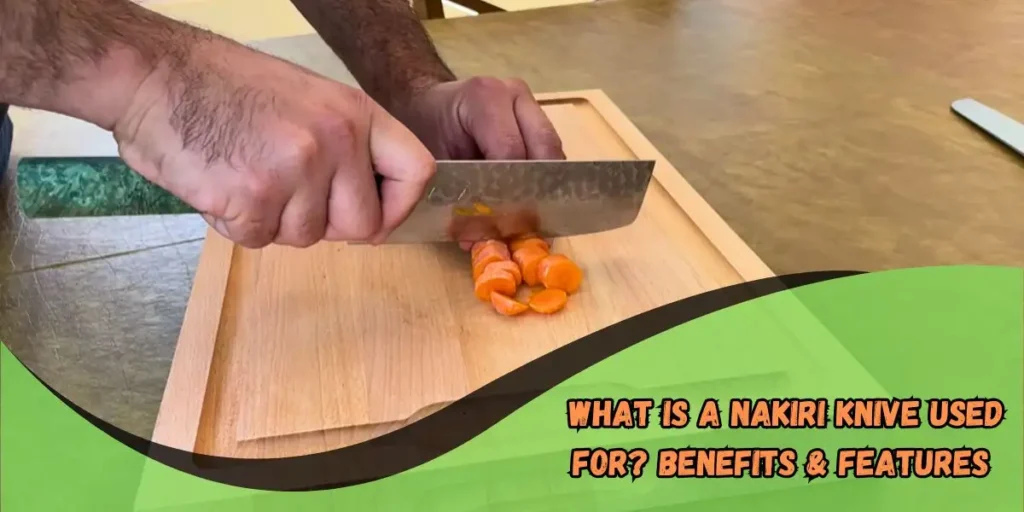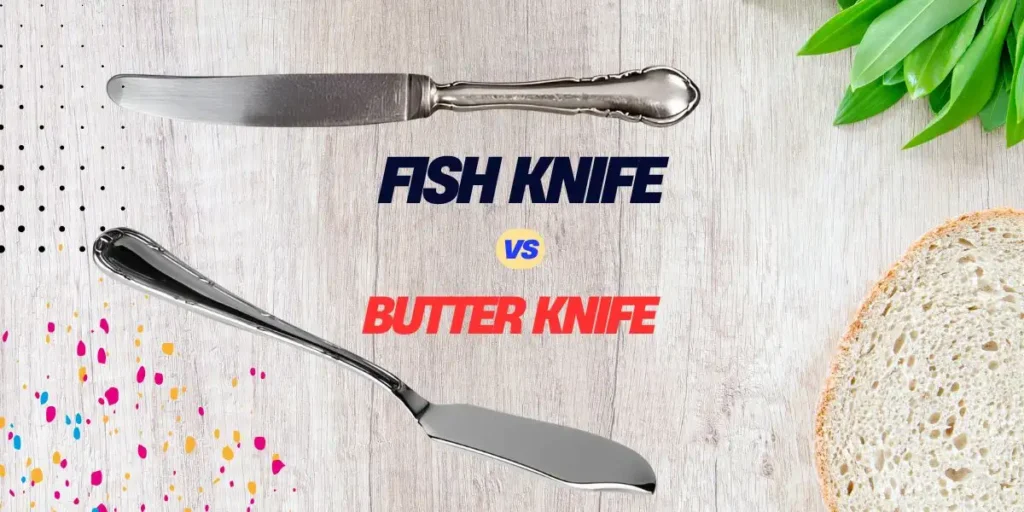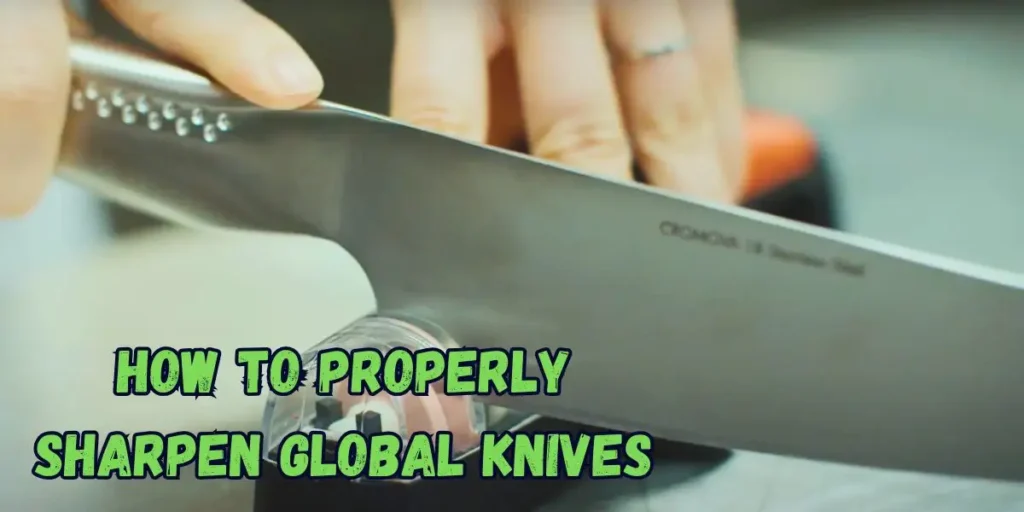How to Sharpen a Knife With a Stone for Beginners
In this comprehensive guide, you’ll learn how to sharpen a knife with a stone for beginners. Using a dull knife can be frustrating, whether chopping vegetables or preparing food. Fortunately, sharpening your knife with a stone is an easy and effective solution.
This step-by-step beginner’s knife sharpening guide will walk you through easy knife sharpening techniques, covering everything from choosing the best sharpening stone for your knife to using the right angle for a sharp, precise edge.
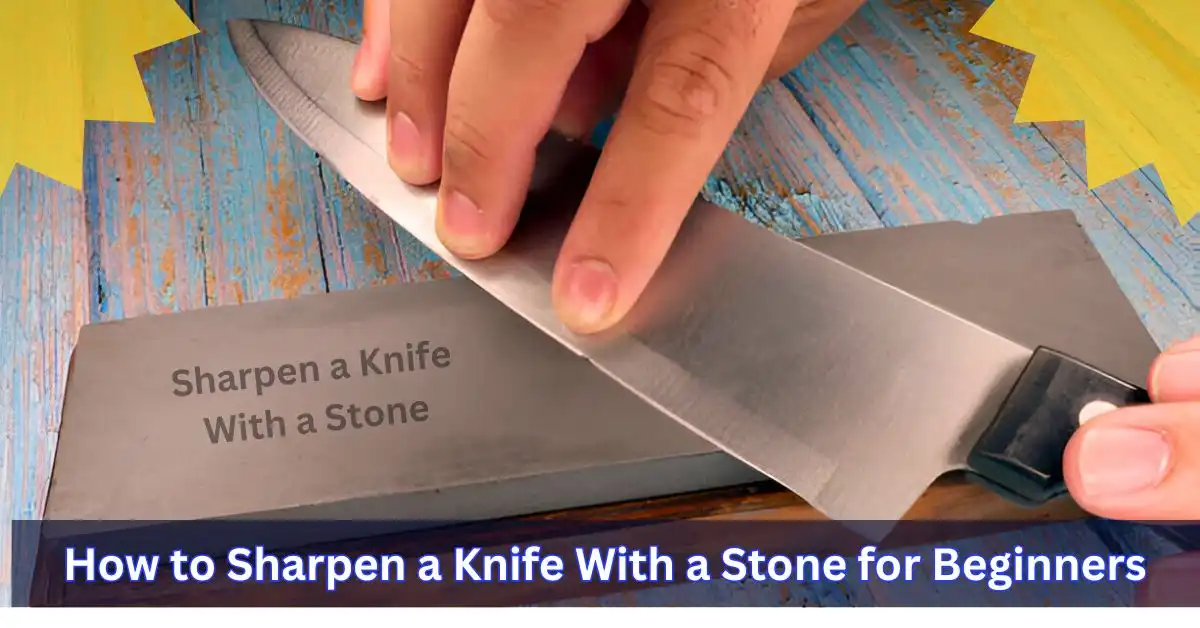
You’ll also discover knife sharpening tips for beginners to avoid common mistakes. Whether using a coarse or fine sharpening stone, this tutorial will teach you the proper method for easily maintaining your knives.
By the end of this guide, you’ll know how to sharpen your knives like a pro, making your kitchen tasks smoother and more efficient.
How can beginners sharpen a knife with a stone effectively?
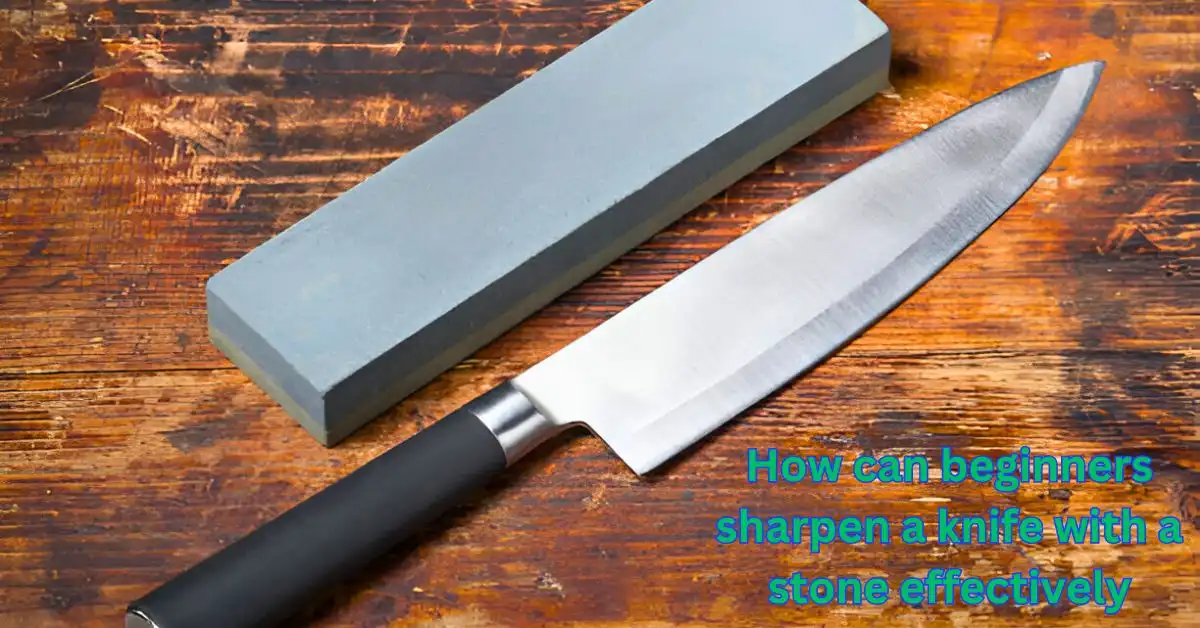
Sharpen a knife with a stone can seem daunting, but it’s easy once you understand the basics. The first step is to choose the right stone, usually a whetstone, which is ideal for beginners. Whetstone sharpening provides a smooth, consistent finish.
You can find different grit levels—coarse, medium, and refined. For beginners, a medium grit is usually the best starting point.
Now, let’s talk technique. Start by soaking the whetstone in water for 5-10 minutes. This helps prevent damage to the stone and provides lubrication. Hold the knife at a 20-degree angle, with the edge facing the stone. Using a steady motion, begin drawing the knife across the stone. Do this on both sides of the blade, keeping the strokes even. It’s essential to maintain the same angle throughout.
Be sure to check the blade’s sharpness often. This step is crucial as it helps you gauge the progress of your sharpening. Once it feels sharp enough, switch to a fine grit to polish the edge. With practice, you will master these knife sharpening techniques and keep your knives in perfect shape for everyday use!
Read now: How to Use Chef’s Choice Knife Sharpener
What are the best knife sharpening techniques for beginners?

For beginner knife sharpening, it’s essential to start with the basics. One of the best techniques is to use a whetstone. These stones provide a smooth, controlled sharpening experience, making them perfect for beginners. Start with a medium-grit sharpening stone. This grit will sharpen your knife without removing too much material.
Start by soaking the sharpening stone in water for about 10 minutes. This prevents the stone from sticking and helps the process along. Hold the knife at a 20-degree angle and gently slide it sweepingly on both sides of the blade. Keep the pressure light to avoid damaging the edge.
Remember, patience is key. Don’t rush the process. Take your time with each stroke. Also, check the edge frequently to make sure it’s getting sharp. Practice will help you improve your technique. With regular practice, beginner knife sharpening will feel more natural, and your knives will stay sharp for a long time!
How can beginners maintain their knives after sharpening?
Maintaining the sharpness of your knives is essential to ensure that they remain effective and long-lasting. After sharpening, it is crucial to follow a few simple maintenance steps. First, always store your knives safely, such as a knife block or magnetic strip. This prevents accidental damage that can dull the blade.
Manual knife sharpening should be done regularly. Even with proper storage, knives lose their sharpness over time. Sharpen them every few weeks, depending on how often you use them. Using a sharpening stone or honing rod for a quick touch-up is best. Avoid using electric sharpeners too often, as they quickly wear down the blade.
Cleanliness is another vital part of maintenance. Always wash your knives by hand and dry them immediately. Leaving them wet can cause rust, which will affect their sharpness.
Drying them immediately after washing prevents rust and ensures your knives stay sharp for longer. These simple steps will keep your knives in excellent condition and ready to use anytime.
What is the easiest way to sharpen a knife?

Sharpening a knife with a stod doesn’t have to be complicated. It’s pretty simple. The easiest way to sharpen a knife is to use a whetstone or diamond sharpening tool. For beginners, a diamond sharpening stone is an excellent, quick, and effective option, making the process much easier.
Start by soaking the stone in water for about 5-10 minutes. Then, place the knife at a 20-degree angle against the stone. Gently slide the knife across the surface, applying light pressure. Work in a smooth, consistent motion. Repeat until both sides of the blade are sharp.
The process is even more straightforward with diamond sharpening stones. They remove metal quickly, meaning you don’t have to put as much effort into it. Plus, they are durable and last longer than regular stones, giving you peace of mind about your investment.
Once you’re done, clean the blade and test it on paper or a tomato. If it cuts smoothly, you’re done! Regular sharpening will keep your knives in top condition, making your kitchen work easier.
Which Sharpen a knife with a stone is best for beginners?
Choosing a suitable sharpening stone is essential for beginners. A whetstone is often the best choice because it is easy to use and produces excellent results. Whetstone sharpening tutorials are widely available, making it easy to learn the basics. Whetstones come in different grit levels; beginners should start with a combination stone.
A combination stone has two sides: one with a coarse stone and the other with a fine stone. The coarse side is perfect for repairing dull or damaged edges. It helps shape the blade and remove imperfections. Once the blade is sharpened, you can use the fine side to refine and polish the edge for a smooth cut.
When choosing a whetstone, look for a medium-coarse grit (around 1000) and a fine grit (3000-6000). Always soak your whetstone in water before use to prevent damage. With practice, a whetstone can keep your knives sharp and ready for any task!
What angle should you use to sharpen a beginner knife?

The right angle is critical to sharpen a knife with a stone. For beginners, a 20-degree angle is ideal. This angle is sharp enough for effective sharpening but not too steep to damage the edge. To maintain this angle, hold the knife steady against the stone. Start with light pressure and move the blade in smooth strokes. This technique helps maintain consistency and ensures a sharp, long-lasting edge.
What are the common knife-sharpening mistakes beginners make?
Sharpening knives with a whetstone can be tricky for beginners. Some common mistakes can affect the results. A big mistake is not using the correct angle. Holding the knife at the wrong angle, such as too steep or too shallow, can damage the blade. Aim for about a 20-degree angle for most knives.
Another mistake is applying too much pressure. Beginners often push down too hard, thinking it will sharpen quickly. This can cause uneven sharpening and damage the stone. Light, consistent pressure works best.
Another problem is avoiding soaking the stone properly. Many people forget to wash the whetstone in water before sharpening. This can cause the stone to wear down quickly and create friction that dulls the blade.
Finally, it is expected that the knife and stone will not be cleaned after use. The metal debris left on the stone can affect future sharpening. Always clean both to keep the process smooth.
By avoiding these mistakes, beginners can improve their knife-sharpening skills and achieve better results.
How do knife sharpening tips for beginners improve results?

Knife sharpening tips for beginners can make a big difference in results. One helpful tip is to focus on the right angle. Holding your knife at a 20-degree angle while sharpening ensures you get the best edge. This small detail can dramatically improve sharpness and durability.
Another tip is to use light pressure. Beginners often need to press more carefully, thinking that’ll speed up the process. However, gentle, consistent pressure helps create a fine, smooth edge and prevents the stone from wearing down too quickly.
Another critical tip is sharpening in both directions. Sweeping the knife across the stone from side to side ensures an even edge. Be sure to clean the stone regularly to remove metal particles that can affect the sharpening process.
Finally, patience is crucial. Take your time with the process. By following these tips, beginners can achieve professional-level results and ensure knives stay sharp for a long time.
Read now: How to Sharpen Electric Knife Blades
How Do You Sharpen a Knife for Dummies?
Sharpening a knife can seem daunting, but it’s easy once you know how. If you’re new to it, start with a whetstone. This is an excellent tool for beginners. First, soak your whetstone in water for about 10 minutes. This helps it stay calm and work better.
Next, hold the knife at a 20-degree angle. This is key to getting the correct sharpness. Slowly move the knife along the stone, starting from the heel and moving to the tip. Do this slowly, using light pressure. Repeat this on both sides of the blade.
After a few strokes, flip the stone over to the fine side. This will help polish the edge and make your knife sharp and smooth. It’s essential to be patient and not rush the process.
Finally, rinse and dry your knife. You’ve now learned how to sharpen a knife for dummies! This process will become easier with practice, and your knives will remain sharp and safe.
How Often Should Beginners Sharpen Knives with a Stone?
As a beginner, you may wonder how often you should sharpen your knives with a stone. The answer depends on how usually you use your knives. If you use them for daily chopping and slicing, you should sharpen them every 2-3 months. For occasional use, sharpening every 6 months should be sufficient.
It’s important not to overdo it. Sharpening too often can wear down the blade. Instead, focus on maintaining your knives with proper care. If the blade feels dull or is not cutting as smoothly as it used to, that’s a sign it’s time to sharpen.
When sharpening, always use the correct angle. For best results, hold your knife at about a 20-degree angle to the stone. Regular sharpening helps keep your knives in great shape, making them safer and more efficient. Track how your knives feel and sharpen them when necessary to avoid dull edges.
Frequently Asked Questions (FAQs)
First, you need to find out where the leak is coming from. The usual repairs involve tightening loose joints, replacing old washers, or resealing pipes. Turn off the water supply before you make the first repair.
Old gaskets, loose pipes, or a broken drain seal usually cause bottom leaks. A corroded or damaged basin could also cause them.
Secure loose fittings, use plumber’s tape around threads, and replace damaged washers and pipes. A pipe clamp or epoxy putty can make impossibly temporary fixes until proper repairs are made.
Sharpening time depends on the condition of the blade. Typically, a dull knife requires about 5-10 minutes per side. If your knife is already sharp, 2-3 minutes per side should be enough to maintain it.
Try cutting a piece of paper or a tomato to test if your knife is sharp. If the blade cuts smoothly without tearing, it is sharp. You can also test by lightly running your finger along the edge to feel the sharpness (be careful).
Frequency depends on use. If you use your knife daily, sharpen it every 2-3 months. For light use, sharpening once or twice a year should be sufficient. You can maintain the edge by honing your knife regularly.
Coarse grit (about 200-600) is used to reshape and repair a dull or damaged edge. Fine grit (1000-3000 or higher) smooths and polishes the edge for a sharp finish.
Yes, most kitchen knives, including stainless steel, carbon steel, and ceramic hardness, can be sharpened with a whetstone; ceramic knives require an excellent stone due to their hardness-grained design.
Related Posts
-
 What Is a Slicing Knife Used For? Discover How It Makes Cooking Easy!
What Is a Slicing Knife Used For? Discover How It Makes Cooking Easy! -
 What knives does Gordon Ramsay use? Check out his premium knives
What knives does Gordon Ramsay use? Check out his premium knives -
 What Knife Do Navy Seals Use? SEAL's Standard Issue 2025
What Knife Do Navy Seals Use? SEAL's Standard Issue 2025 -
 What Knife Does John Wick Use? Learn About His Deadly Blade
What Knife Does John Wick Use? Learn About His Deadly Blade -
 What is a Nakiri Knives Used For? Benefits & Features Explained
What is a Nakiri Knives Used For? Benefits & Features Explained -
 Fish Knife vs Butter Knife: Key Differences and Uses Explained
Fish Knife vs Butter Knife: Key Differences and Uses Explained -
 How to Sharpen Global Knife: A Quick Guide 2025
How to Sharpen Global Knife: A Quick Guide 2025 -
 Decoding the Iconic Why So Serious Joker Knife
Decoding the Iconic Why So Serious Joker Knife -
 The Right Way to Use a Steak Knife: Tips and Tricks
The Right Way to Use a Steak Knife: Tips and Tricks -
 How to Sharpen a Morakniv Knife Safely and Effectively
How to Sharpen a Morakniv Knife Safely and Effectively





